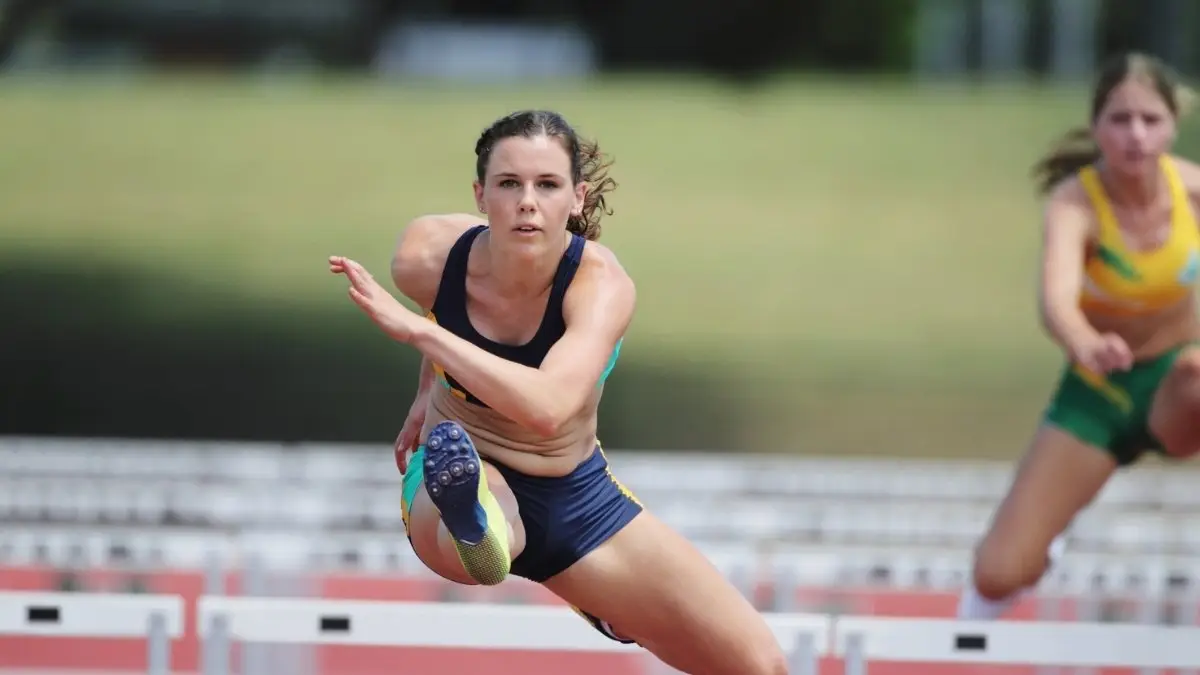Two-time Olympic silver medalist Kenny Bednarek found his secret weapon not on the track, but in 40-minute sessions of complete stillness. He calls the breathing technique “magical,” saying it can take him from feeling like “absolute crap” to “brand new.”
This is the new frontier of peak performance, where the best athletes are realizing that pushing the body to exhaustion has its limits. The real advantage comes from mastering the nervous system. This isn’t about abandoning cardio.
It’s about adding a powerful, ancient toolkit of breathwork, yoga, and meditation to handle pressure and speed up recovery. This guide will show you exactly how they do it, and how you can gain the same control.
How a Quiet Change Is Helping Athletes Win
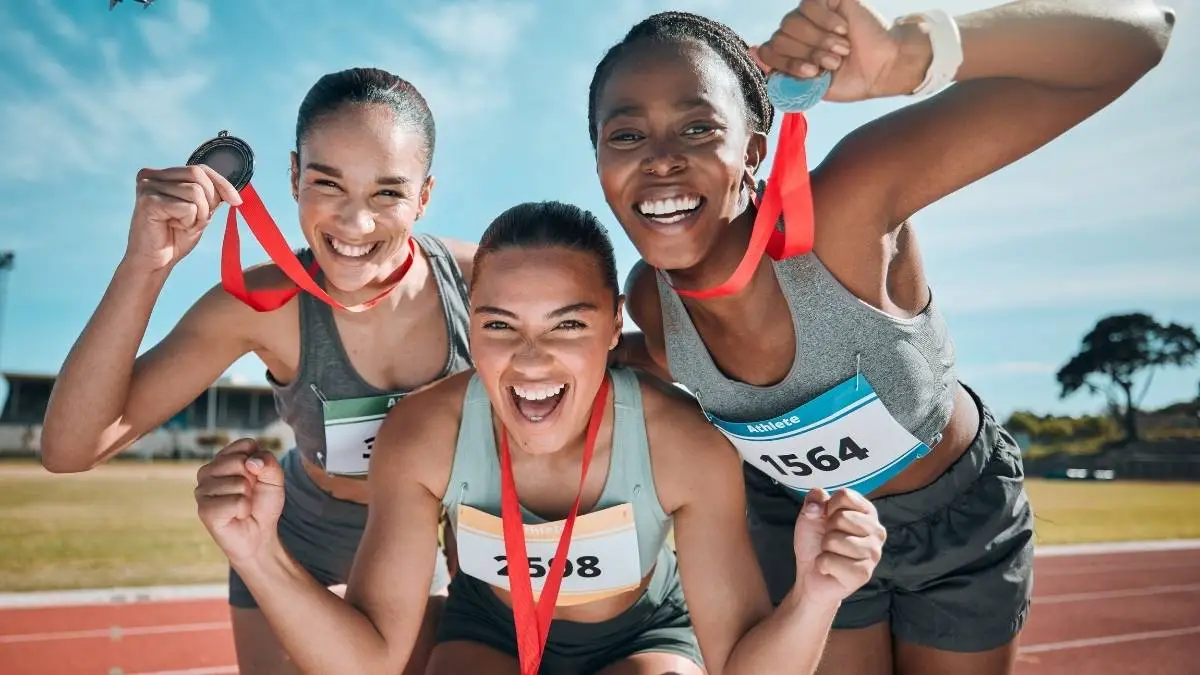
Something very different from an explosive 200-meter sprint. In the quiet moments before a race, or during a tough training week, Kenny Bednarek, a two-time Olympic silver medalist, sits perfectly still.
For 40 minutes to an hour, he does something called diaphragmatic breathing. He calls it “magical.” It can take him from feeling like “absolute crap” to “brand new.”
This image shows a quiet change that is reshaping how athletes perform at their best. An elite athlete is finding his edge in stillness, not in motion.
The idea that Olympic athletes are “quitting traditional cardio” isn’t really true. It’s more of a metaphor. Cardio training is still a key part of how they prepare. The change is smaller but more important.
Athletes are adding old mind-body practices to their training. This helps them handle the huge stress of modern sports. This shows a new way of thinking.
Athletes used to believe a bigger engine was always better. Now, they know that engine needs a great control system to work its best.
The new way to get ahead in sports is not about pushing the body’s physical limits. It’s about mastering what’s happening inside. This “ancient practice” is really a toolkit. It helps control the nervous system, speed up recovery, and build strong mental focus.
The toolkit has three main parts: conscious breathing (breathwork), mindful movement (yoga), and focused stillness (meditation). These are not just “soft” extras anymore. They are essential skills to train, just like strength and conditioning.
Sports scientists now agree that your breathing can hold you back. They also know that controlling your breath can change how your body and mind feel.
This trend is a fix for the old training idea of “more is more.” Old training plans pushed athletes into “fight or flight” mode to make their bodies adapt. But they didn’t focus on the “rest and digest” mode.
Without it, athletes can face problems like constant stress, high cortisol levels, poor recovery, and burnout. Breathwork, yoga, and meditation are powerful ways to turn on this “rest and digest” state.
They often do this by working the vagus nerve. This makes them a needed fix, not a fad. They are the missing piece that a focus on just pushing harder had ignored.
This change also gives a new meaning to “toughness” in sports. The old way valued grit and pushing through pain.
The new way, seen in athletes like Novak Djokovic and Simone Biles, defines toughness as being able to control yourself under huge pressure. This new kind of toughness comes from knowing what’s going on inside your body.
It’s the skill of switching from worried to calm. It shows that your mental and emotional state are not separate from your physical performance. They actually drive it. The mind is no longer just something to discipline. It’s a system to be trained.
The Athlete’s Ancient Toolkit: What They Use and Why
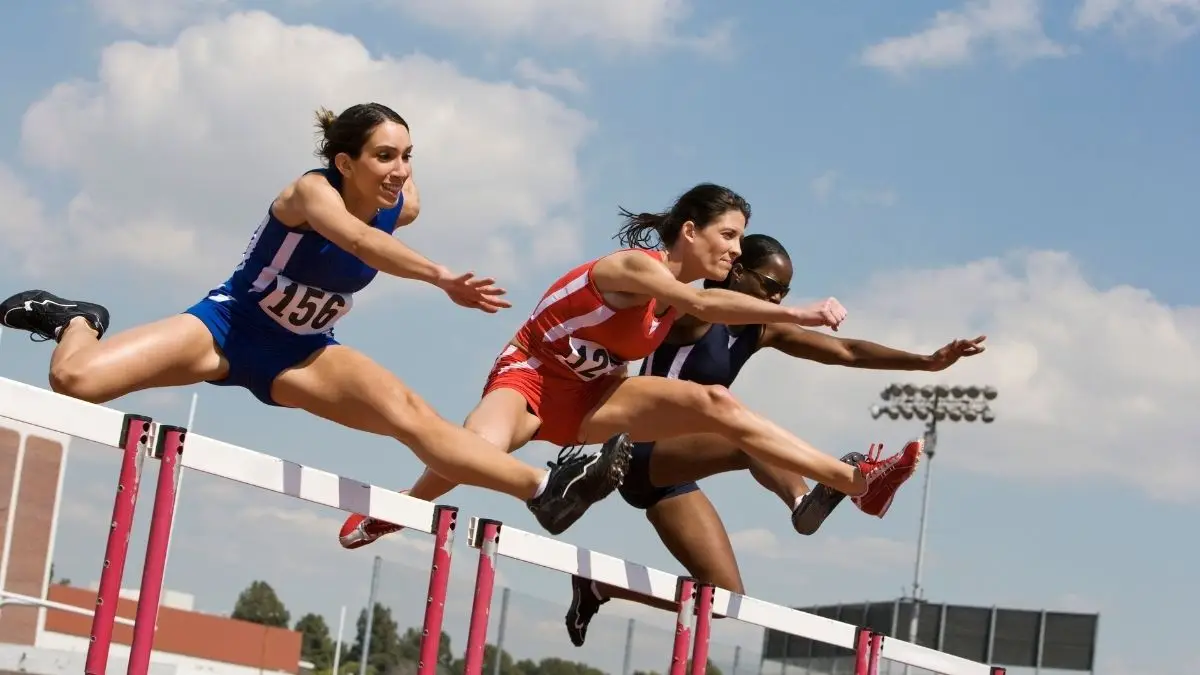
At the center of this performance shift is a set of tools. They have been improved over thousands of years and are now proven by science. These tools give athletes amazing control over their bodies and minds.
How Breathing Makes You a Better Athlete
Breathing is special. It’s the only part of your automatic nervous system you can control on purpose. This makes it a direct switch for your body’s command center. By changing how you breathe, you can flip between the “gas pedal” for performance and the “brake” for recovery.
Science shows that slow, deep breathing improves heart rate variability (HRV). HRV is a key sign of your body’s strength, recovery, and ability to handle stress.
Technique Deep Dive: Diaphragmatic (Belly) Breathing
Belly breathing is the base for all breath control. The diaphragm is your body’s best muscle for breathing in. But many people, especially when stressed, breathe with their chest. By using the diaphragm on purpose—breathing in so your belly pushes out—you can take fuller, better breaths.
The benefits are big. It makes breathing easier, uses less oxygen, and a 2011 study found it lowers stress after exercise by reducing cortisol and increasing melatonin. This is the same technique Kenny Bednarek uses for his “magical” recovery.
Technique Deep Dive: Box Breathing (Tactical Breathing)
This is also called tactical breathing. Navy SEALs famously use it to stay calm in dangerous situations. It follows a simple pattern: breathe in for four seconds, hold for four seconds, breathe out for four seconds, and hold for four seconds.
This pattern is great for feeling “alert and relaxed at the same time.” It’s perfect for handling nerves before a competition or refocusing during a break. The counting keeps your mind busy so it doesn’t get anxious.
Technique Deep Dive: The Physiological Sigh
Research from Stanford University supports this technique. The physiological sigh is one of the fastest ways to calm down on purpose. You take two quick breaths in through your nose (one big, one small) and then one long, slow breath out through your mouth.
This pattern is very good at getting rid of extra carbon dioxide and quickly calming your stress response. It works like an emergency brake for high-pressure moments.
Technique Deep Dive: Strategic Breath Holding & CO2 Tolerance
Here’s a surprising idea in elite breathwork. Better performance often comes from your body getting used to more carbon dioxide (CO2), not just from taking in more oxygen (O2).
The common advice to “take a big deep breath” can actually be bad when you’re tired. Breathing too much, or hyperventilating, gets rid of too much CO2. This is a problem because CO2 tells your body to release oxygen to your muscles.
Without enough CO2, oxygen stays stuck to your red blood cells, and your muscles don’t get what they need. This is the main idea of the Buteyko breathing method. Swimmers like Caeleb Dressel use this idea.
He holds his breath for the last 25 yards of a sprint. This stops his stroke from getting messy and uses his trained tolerance for high CO2 to keep his speed up.
The Wim Hof Method
A more extreme practice is the Wim Hof Method. It combines rounds of fast breathing, long breath-holds, and getting in cold water on purpose.
People who use it, like MMA fighter Alistair Overeem, say it helps with swelling, recovery, and focus. But some scientists say to be careful. They suggest that some intense breath-holding might not help performance and could make some people dizzy.
Why Athletes Use Yoga for More Than Stretching
For top athletes, yoga is much more than just stretching. It’s a key type of training that fixes problems caused by doing the same movements over and over in their sport. Yoga stretches and strengthens muscles that are often missed in normal training.
This improves balance, core strength, and body awareness, which are all important for preventing injuries.
Some yoga poses are great for common athlete problems:
- Malasana (Yogi Squat): This deep squat opens up tight hips and inner thighs. It also strengthens the ankles. It’s great for runners, cyclists, and weightlifters.
- Supine Twist: This pose gently twists your spine while you lie down. It helps calm the nervous system and releases back tension. It’s a perfect cool-down pose.
- Half Pigeon Pose: This pose gives a deep stretch to the hip muscles. These muscles get very tight in athletes who run or do other forward motions a lot.
The real power of yoga for athletes is matching breath with movement. This practice trains the nervous system to stay calm. It also helps the mind stay focused, even when the body is uncomfortable. That skill is very useful in a tough competition.
Hayley Winter, who started the Institute of Yoga Sports Science, says that yoga designed for a specific sport can help athletes move more efficiently, control their bodies better, and even be more powerful.
How Being Still Can Make You Stronger
If breathwork is the tool to control the nervous system, meditation is the practice of training the mind that runs it. The science is strong.
One Harvard study found that just eight weeks of mindfulness meditation changed parts of the brain linked to memory, self-awareness, and stress. For athletes, the practice helps them focus on the present moment. This makes them more confident and less nervous about performing.
Getting into the “Flow State”
A big goal of meditation for athletes is to get into the “flow state” more easily. That’s the feeling where top performance seems easy and natural.
Meditation helps create the right brain conditions for flow. It trains the athlete to quiet the negative self-talk that can ruin a performance under pressure.
Types of Meditation for Athletes
- Visualization: This is when you mentally practice a perfect performance with lots of detail. It builds confidence and strengthens the brain pathways for the movements you want to make. It helps program your body for success. Champions like Michael Phelps use this a lot.
- Body Scan Meditation: This involves paying gentle attention to each part of your body. Athletes can improve their mind-muscle connection this way. They can also find and release hidden tension and become more aware of their bodies. This helps with both relaxation and injury prevention.
- Focused Attention Meditation: This is the basic practice of keeping your focus on one thing, like your breath. It builds your mental “muscle” for concentration. This helps an athlete stay focused and perform well even with distractions.
All of these practices—breathwork, yoga, and meditation—work by toning the vagus nerve. The vagus nerve is the main channel of the “rest and digest” system. It’s the body’s master controller of calm.
Slow belly breathing, mindful movement, and quiet focus all stimulate this nerve. This leads to a higher “vagal tone,” which is linked to a lower resting heart rate, less stress, faster recovery, and better emotional control. This gives one strong scientific reason why these ancient practices work so well for today’s athletes.
How the World’s Best Athletes Use These Skills
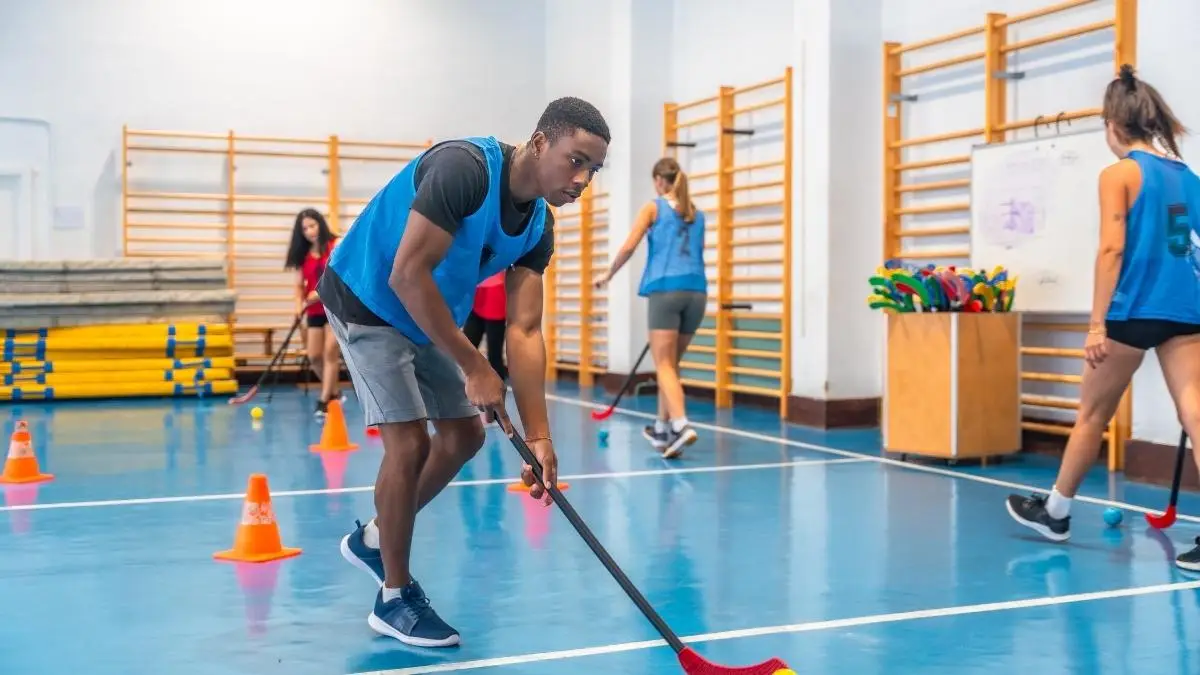
The science makes sense when you see it in the routines of the world’s best athletes. They use these ancient tools with skill and purpose.
Novak Djokovic: How He Resets During a Match
Novak Djokovic talks openly about the intense “storm” he feels inside during big matches. He admits to having the same doubts and fears as anyone. What makes him great isn’t that he avoids this storm.
It’s that he knows how to get through it. During one break in a match, people saw him do a specific reset. He put his fingers in his ears and massaged his stomach area. Both of these actions stimulate the vagus nerve.
Then he took deep, slow belly breaths. This wasn’t just to relax. It was an active “strategic reset of the nervous system” happening live. At the Paris Olympics, he said “conscious breathing” was the most important tool for an athlete’s mind.
He said it’s a skill that needs to be trained just like a forehand. He uses belly breathing and alternate nostril breathing to handle pressure. He has also tried the Wim Hof Method.
Swimmers: How They Use Breath to Win
Swimming is a perfect place to see the different ways breathwork can be used. Michael Phelps, the most decorated Olympian ever, used breathing for his mental health. His main technique is the “Lion’s Breath.”
It’s a deep breath in followed by a loud “HA” breath out. He uses it to get rid of anxiety and even teaches it to his kids. Before a race, he famously used visualization and mindfulness to get calm and focused.
Caeleb Dressel’s use of breath is completely different. It’s all about tactics. He has a risky plan to hold his breath for the whole last 25 meters of a 50-meter sprint.
This is to avoid any movement that could mess up his stroke and cost him a tiny fraction of a second. It shows he has trained to handle discomfort and is focused only on speed.
The story of British canoeist Adam Burgess is about a big change. For years, he had breathing problems that doctors thought was asthma from exercise. He found out he could fix his breathing by breathing through his nose and holding his breath.
He learned so much that he became an Oxygen Advantage instructor. He turned a problem that could have ended his career into a strength.
Simone Biles and LeBron James: How They Stay Calm Under Pressure
In gymnastics, a small slip in focus can lead to disaster. Mental control is everything. Simone Biles uses a set of five breathing techniques to stay focused and calm.
Her plan includes deep 5-count breathing, belly breathing to slow her heart rate, and making her exhale longer to calm her nerves. She also matches her breath to her arm movements and does a “spot focus” exercise to improve her concentration.
Basketball star LeBron James gave one of the clearest examples of mindfulness. He was seen meditating on the bench during a close playoff game in 2012. In training, he uses long exhales to turn on his “rest and digest” system for faster recovery.
His work with the meditation app Calm has helped make mental fitness popular. It shows that training the mind is a big part of staying at the top of your game for a long time.
The Coaches Who Teach These Skills
This change is also being led by a new type of coach who gets the mind-body connection. George Mumford was Phil Jackson’s “Secret Weapon” when the Chicago Bulls and Los Angeles Lakers were winning championships.
He taught mindfulness to Michael Jordan and Kobe Bryant. His ideas go beyond simple techniques. He wants athletes to get to a state where they can “just be”—calm, present, and ready. Leonardo Pelagotti was the breath coach for the 2024 Chinese Olympic breakdancing team.
He uses specific plans to manage nerves before a performance and improve sleep for recovery. And Corrie Falcon, a former swim coach at UC San Diego, added mindfulness to her team’s training. She coached 17 national champions and eight Olympic trial qualifiers.
Why This Isn’t New: A Look at Ancient Training
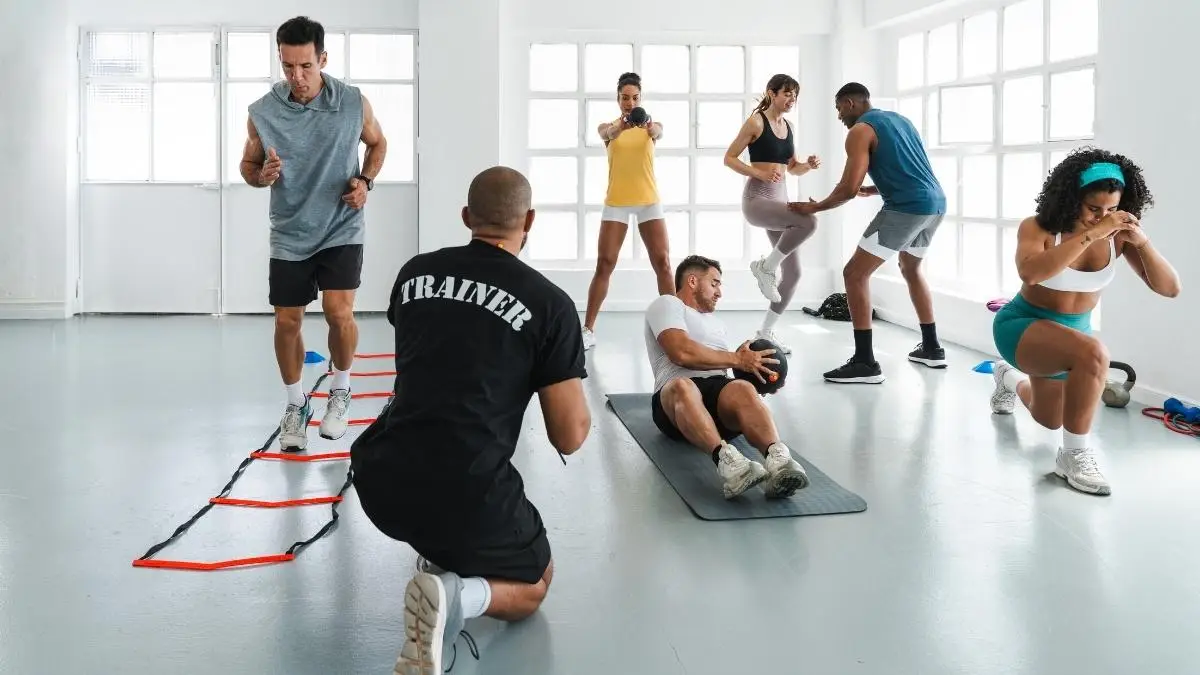
This modern trend is not new. It’s a powerful rediscovery. The idea of training the whole person—mind and body—has deep roots in sports history.
The Greek Ideal
The training of ancient Greek Olympians was about developing the body, mind, and spirit. The gymnasion, the old version of the modern gym, was a place for hard physical training and also for talking about ideas.
Ancient athletes were pros who had strict training plans. They did strength training with stone weights called halteres, practiced their sports, and had recovery methods like massage and water therapy.
They did stretching and breathing exercises to get ready for competition. The famous doctor Galenus was against training that was too focused on one thing. He wanted athletes to do more well-rounded exercise. The goal was a complete athlete, not just a strong body.
Eastern Roots
The specific techniques used today come from ancient Eastern cultures.
- India: Yoga and pranayama (the practice of controlling breath) started in India. This is a key source. Ancient Hindu wrestlers mixed strength training, like lifting stones and swinging Indian clubs, with bodyweight exercises like the Hindu squat and push-up. These exercises are still used today. They did all of this as part of their spiritual practice.
- China: A long history of martial arts has always included breath control, mental focus, and physical power. Strength training was also common. Ancient strongmen would compete by lifting huge, oddly shaped bronze pots (dings) and heavy stone lions.
- Egypt: Pictures on tomb walls from as far back as 3500 BC show men and women doing bodyweight exercises and using weights. This shows a long-held cultural value for physical training.
This history shows that for most of the 1900s, athletes in the West forgot something important. The ancient idea of training the mind and body together was mostly ignored. Instead, they used a factory-like model that cared most about things you could measure—speed, strength, endurance.
The rise of sports science was very helpful, but it focused on the body’s hardware (muscles, heart, lungs). It forgot about the important software (the mind and the nervous system). The current trend is putting these two things back together.
It’s a powerful mix of old wisdom and modern science, like HRV monitors and brain scans. This is creating the most complete athlete ever.
How You Can Use These Olympic Tricks

Most people don’t have the natural talent of an Olympian. But the ideas of controlling your nervous system and mental focus are for everyone.
The same tools that help a sprinter stay calm can help a weekend warrior manage stress. They can help a casual runner improve their endurance or a local competitor recover faster.
Getting started is simple. A basic practice of just five minutes of daily belly breathing can start to train your nervous system. It can make you more aware and build a foundation of calm. To make it a habit, experts suggest “habit stacking.”
This means you do your new five-minute practice right after something you already do every day. For example, do it after your morning coffee or right after a workout.
From there, you can build your own toolkit. You can pick techniques for what you need—whether it’s to calm down before a game, reduce stress instantly, or recover after you’re done.
Key Table: The Modern Athlete’s Mindfulness Toolkit
This table puts key practices into a simple guide. It lets any athlete start using these top-level strategies.
| Practice | How-To (Simplified) | Primary Benefit | Elite Adherents |
| Diaphragmatic Breathing | Lie down, hand on belly. Breathe in through your nose for 5s, feel the belly rise. Breathe out slowly for 5-8s. | Post-Workout Recovery, Calms Nervous System, Lowers Cortisol | Kenny Bednarek, Novak Djokovic, Simone Biles |
| Box Breathing | Breathe in through your nose for 4s, hold for 4s, breathe out through your nose for 4s, hold out for 4s. Repeat. | Pre-Competition Calm, In-Game Focus, Reduces Anxiety | Navy SEALs, John John Florence, Coaches |
| Physiological Sigh | Take two quick breaths in through the nose (one big, one small). Then, one long, slow breath out through the mouth. | Instant Stress & Anxiety Reduction, Nervous System “Reset” | Stanford Research, Recommended by top coaches |
| Yoga: Child’s Pose w/ Side Stretch | Kneel, sit on heels, fold forward with arms out. Walk hands to one side to stretch, then the other. | Lower Back Release, Gentle Hip Opening, Stretches Side-Body | General Athletic Recovery Programs |
| Visualization | In a quiet place, close your eyes. Imagine a successful performance in great detail, from start to finish. | Mental Rehearsal, Confidence Building, Pre-Programming Success | Michael Phelps, Malaika Mihambo, Countless Olympians |
What This Means for the Future of Sports
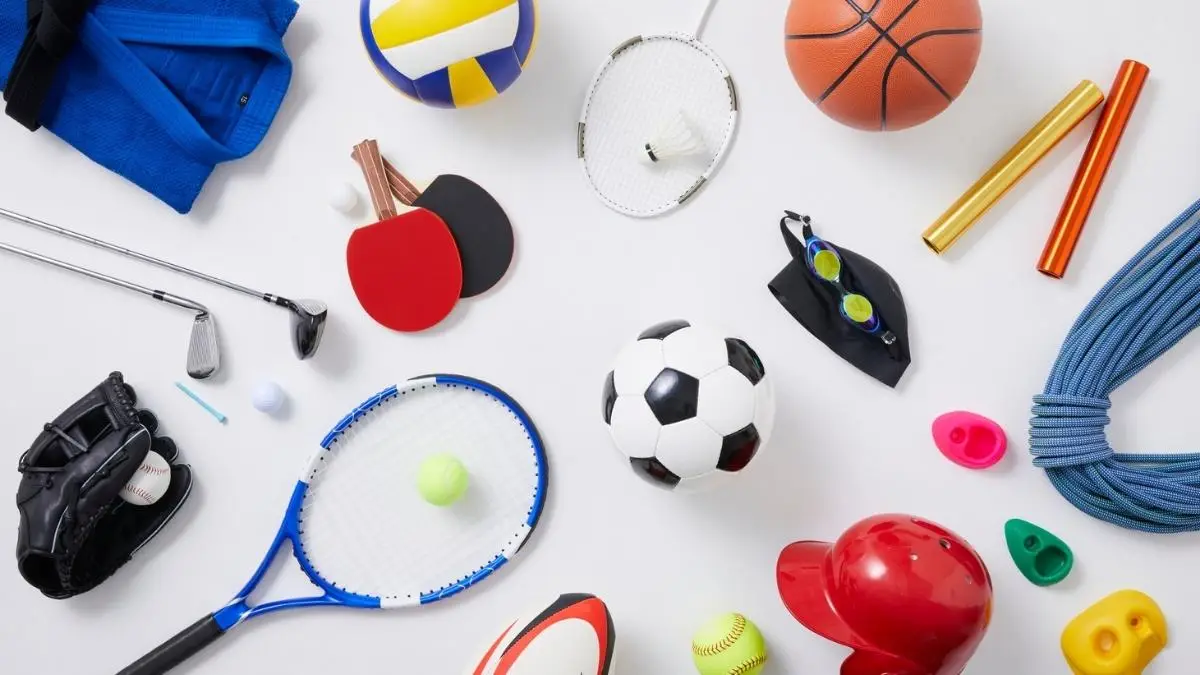
The proof is strong. The best athletes today are not just the strongest or fastest. They are the ones who have mastered what’s going on inside them. They use stillness just as skillfully as they use strength. They use calm with the same focus as they use power.
The old idea of “physical training” and “mental training” being separate is disappearing. Mind-body practices show that the two are part of one system.
Training one has a real, measurable effect on the other. As mindfulness coach George Mumford says, the goal is to get past just doing the techniques. The goal is to reach an “art of mindfulness” where an athlete can perform while being completely in the moment.
The future of sports, from kids’ leagues to the Olympics, will see these practices become normal. The coach of the future will need to know how to lead a team in box breathing just as well as they know how to plan a workout.
The biggest competitive edge is no longer a secret training method. It is the ancient, open secret of mastering yourself. The image of Kenny Bednarek, finding his speed in stillness, is not a one-off. It is the plan for the champion of the 21st century.

